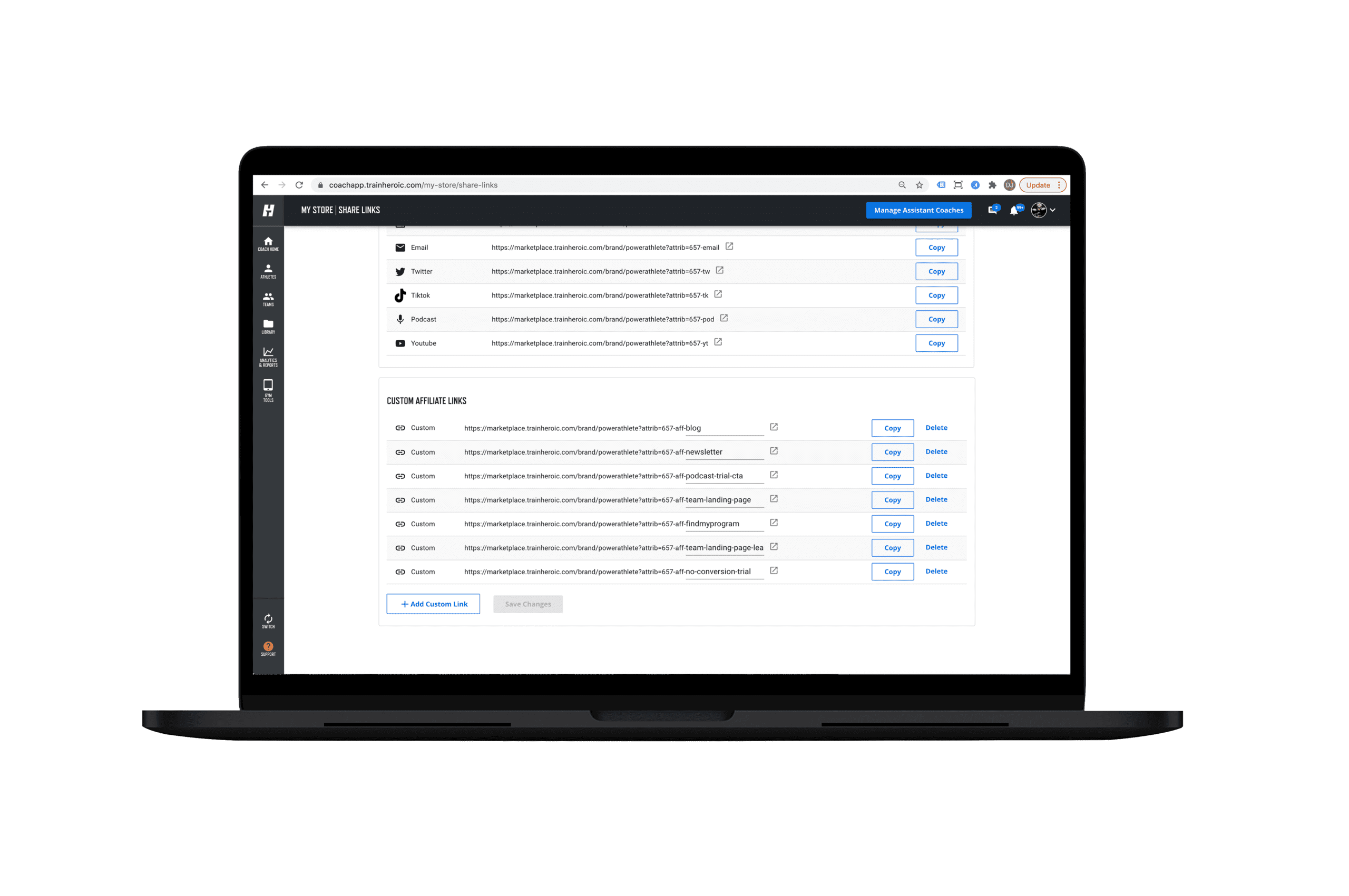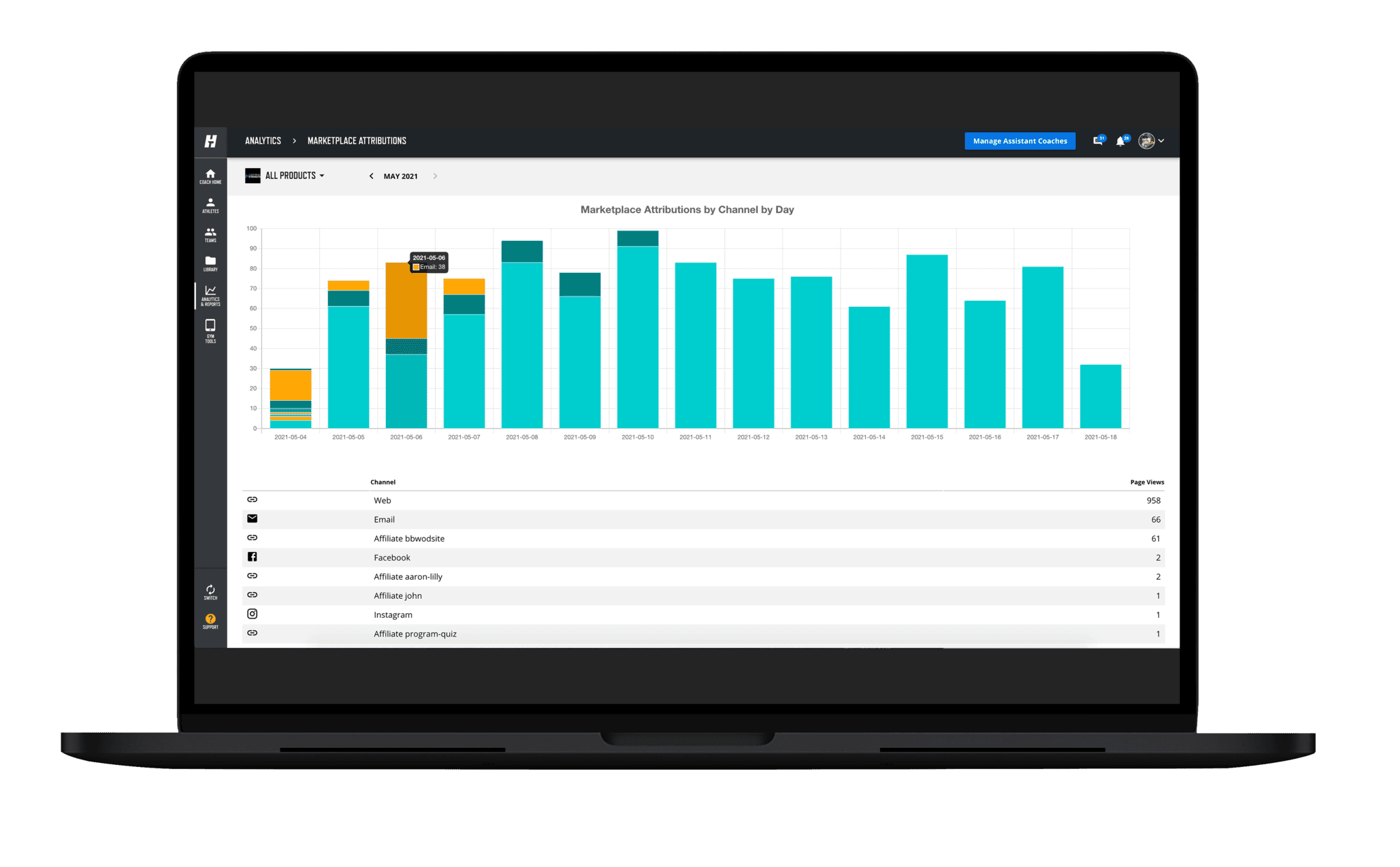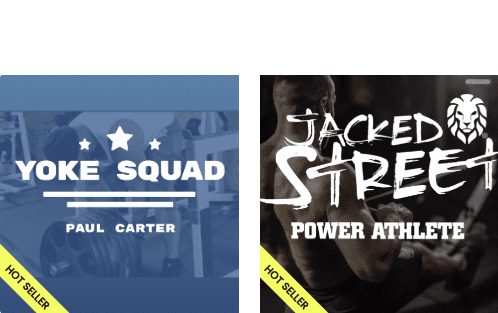TrainHeroic Marketplace Attribution Tools: Optimize Your Online Coaching Business

We are building the world’s #1 training marketplace. In order to do that, we need to give you, the seller, the best tools available to optimize your business.
We’re excited to announce new improvements to your experience as a seller in the TrainHeroic Marketplace.
One of the biggest investments you’ll make in your online training business is marketing. Whether it’s time and attention, dollars spent on an internal marketing team, or an advertising budget, you need insight into the impact of each effort in order to optimize and grow your business.
We have some great news. With TrainHeroic’s Marketplace Attribution solutions you now have more insight than ever before.
DJ Horton
DJ is the VP of marketing, education, and customer support at TrainHeroic. Prior to joining TH, his career centered around digital marketing and branding – leading teams at a Denver-based branding agency and at Vail Resorts.
A lifelong athlete, DJ was a wrestler, trained and coached martial arts for 15 years, and played football at Colorado College. DJ was raised in a powerlifting household and has a life-long passion for the iron.
Attribution tracking: your key to business gainz
If you are like the thousands of trainers and gym owners we serve, you’ve got a coaching business selling remote training service online. You’re marketing your services and training packages, perhaps using the TrainHeroic Marketplace. You’ve got more work to do than hours in the day.
From programming to communicating, providing coaching services to your clients takes up most of your day.
You know finding the time to be active on social media, create blogs, send email campaigns and other marketing efforts is vital to growing your business. But, let’s be honest, chances are you aren’t a trained marketer. If that’s the case, you’ve probably found yourself wondering:
- Just how much marketing do I need to do to grow my online business to meet my income goals?
- Should I lean harder into any specific area?
- How do I maximize the return on the time I’m spending trying to market my remote training business?
Our newest tools allow sellers to answer all of these questions, and this guide is going to give you some insider insight to using data to make marketing decisions.
Channel Attribution
Our attribution solution allows you to look at traffic and conversions coming from different sources and marketing efforts. This is done by appending a special tracking code to a URL you’ll use as a link for specific marketing efforts.
We include custom links for:
- Linktree
- Your website
- Tiktok
- Podcast
- YouTube
We also allow for very simple creation of new links that you can customize to run affiliate marketing campaigns like never before.


Setting this up is simple and easy
Using the report, putting it into action:
Before diving into the report and making changes to your marketing efforts, it’s important to contextualize this tool in the broader scheme of your marketing funnel.
For illustrative purposes, we’ll use a very simple 3 stage funnel analogy to help envision your marketing efforts.
The stages of this basic funnel are:
Awareness (or top of funnel): we can think of this stage in a simple interaction. A potential buyer goes from never having heard of your brand and product, to being aware of your offering. Think of this as your first introduction at a huge digital party that is the internet.
Things like blog content, YouTube videos, podcasts, social media posts, advertisements and white papers are all considered “push” efforts at the top of the funnel. You, the seller, create content and messaging with the goal of pushing the message in front of potential customers and creating an awareness of your brand and the products you offer.
Consideration (or mid-funnel): The potential buyer in the consideration phase is actively looking for a solution to solve a problem or desire in their life. For example: I want to bulk up for summer. At this stage, they begin searching for a solution to the problem. As a seller, you want to pull them into your offering, stand out amongst the crowd, and ensure they see the connection between their desire and your product. Show them you are the guide to help them on their training journey to become their ideal version of themselves.
Organic search and even paid search advertising are considered “pull” efforts at the mid funnel. As a seller, we’re trying to pull some mental Judo here capitalizing on the buyer’s demand by serving great content that simply communicates why your product is the best solution to their problem or desire.
Your TrainHeroic Marketplace pages are a great tool at this stage of the funnel. A targeted offering (niche), great imagery, and compelling copy on your sales listing page are your best tools to convert lookers into buyers. It’s important to remember that modern buyers are considering multiple solutions, comparing and contrasting their options all the time.
Blogs, long form articles about your programming, etc. hosted on your own website are also great tools for the consideration stage of the funnel.
Decision (or low funnel): Potential buyers at this stage are convinced they are going to pay for a solution. They’ve done their research and likely narrowed down their options to just a handful at most. They are ready to make a purchase.
We’ve designed the TrainHeroic Marketplace product listing pages to pull potential buyers from the consideration stage down through the decision stage. Things like a sample week of training and athlete testimonials are valuable tools at this stage of the marketing funnel. This is also where retargeting campaigns and offers can come into play should you choose to leverage them.

Like a great training program, marketing is a combo of primary efforts and accessories
In many ways marketing is a lot like a great training program. Just like you don’t improve your 1 rep bench max by only benching, you don’t get business gains from pushing your message through a single channel.
You don’t know down to the gnat’s ass exactly how much each accessory exercise contributes to the goal, but you do all of them because they all have a place and purpose.
In other words, if you take one thing from this article let it be that you should not try to use this powerful new tool to find marketing that “doesn’t work” or things to trim out completely from your efforts.
Marketing is like a machine. You cannot remove one of the basic cogs and expect the machine to work. The best marketing funnels are multi-touch and multi-channel.
If you’re interested in the nerd-speak behind this concept, read on.
*Puts on his glasses and points to a white board.
It’s important to understand that the TrainHeroic Marketplace Attribution tool is working off of a last-click attribution model. That means that a user’s visit or purchase is attributed to the last link they clicked on before visiting your site. This is a reliable and basic form of attribution modeling.
Advanced attribution modeling would assign some value of a single conversion to each of the 7 (often more) touchpoints a consumer has with your message. But, this is extremely complex and more of an art than pure science.
For instance: you might give 2x more weight to a video view than a blog read because research suggests the combination of visual and auditory cues has a larger impact than the written word on buyer psychology.
But, what if you’re a great writer and not great at making video? Your video probably doesn’t have quite the impact.
You might be asking, “well isn’t that important for me to know?” Or, “how do I optimize my marketing efforts without perfect attribution detail?”
While it’s tempting, chasing the perfect attribution model as a small to medium sized business is a quick path to spending a lot of time, energy, and money on something that isn’t going to give you a return – kind of defeats the purpose of maximizing the return on your efforts, right?
If you are spending hundreds of thousands or millions of dollars per month on different marketing efforts, attribution modeling could be a useful tool. Simple changes in budget allocation at this volume could lead you to massive changes in ROI.
In reality, this probably isn’t you.
More than likely, you’re running email campaigns, producing blog and video content regularly, and running a social media presence that is actively posting at least once per day.
All of those things are foundational to any digital selling success.
While it may be tempting, this tool should not be used to answer questions like: is social media working? Should I stop doing (insert marketing effort here)? Can we get rid of our email marketing?
Instead, use this report to understand the digital highways and byways by which people are getting to your product listing pages (traffic) and coming back to make a purchase. Optimize for what is working.
Each brand’s funnel and audience is unique. For instance: you may find that your email campaigns are driving huge numbers of conversions. Rather than looking to cut other efforts like social media for instance, aim to look for ways to get more email addresses from your social efforts.
Look first to bolster your efforts by finding easy wins. One of the biggest mistakes we often make as marketers is not including direct calls to action in our efforts. Use this information as a guide to ensure you are putting enough marketing messages with strong calls to action into the market on a weekly basis across multiple channels. If you aren’t actively keeping the roadway open, people will not come to your site.
Armed with these tools and a better understanding of optimizing your marketing efforts, go forth and conquer, friends!

Join the community
Sign up for the latest training news and updates from TrainHeroic

About TrainHeroic
Support
Made with love, sweat, protein isolate and hard work in Denver, CO
© 2021 TrainHeroic, Inc. All rights reserved.



